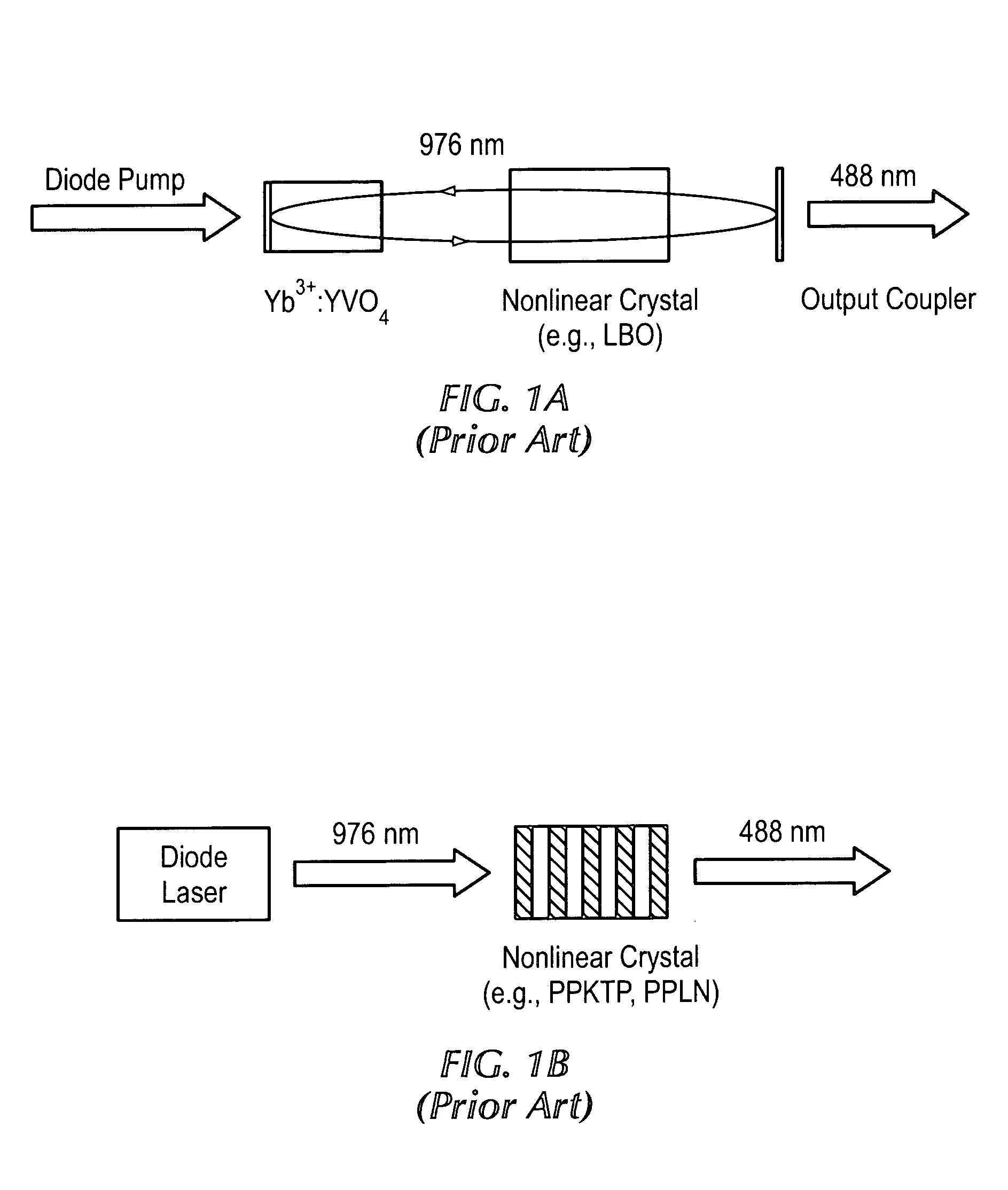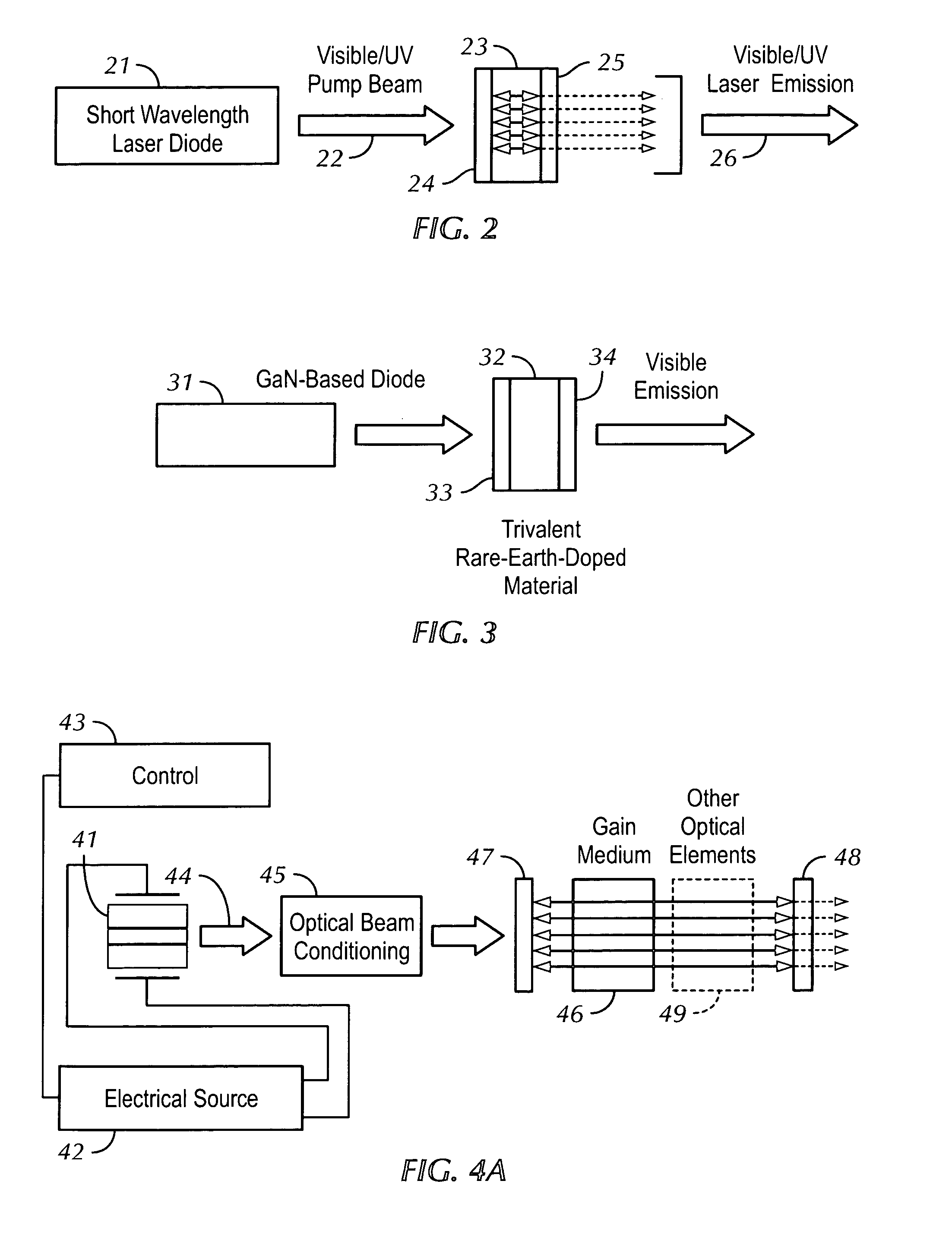Short wavelength diode-pumped solid-state laser
a laser and diode pump technology, applied in the field of lasers, can solve the problems of difficult to obtain and sustain appropriate lasing transitions, limited available colors, and difficult to design and manufacture lasers that generate light over the entire visible rang
- Summary
- Abstract
- Description
- Claims
- Application Information
AI Technical Summary
Benefits of technology
Problems solved by technology
Method used
Image
Examples
example 1
[0081]Eu3+:YLF The 5D2-7F3 transition in YLF leads to emission in the 510 nm regime. Also, the 5D2-7F1 transition leads to emission in the 470 nm regime.
example 2
[0082]Eu3+:YVO4: Transitions originating from the 5D0 level lead to visible emission in the red spectral region. The strongest emission appears to be from the 5D0 to the 7F2 level, corresponding to about 619 nm, and the 595 nm transition from the 5D0 to the 7F1 level, and the 539 transition from the 5D1 to the 7F1 level. See FIGS. 13A and 13B for a more detailed description of the emission and pump transitions for Eu3+:YVO4.
example 3
[0083]Tb3+:TAB: Emission from the 5D4 level to the 7F6 level corresponding to emission around 485 nm has been observed. Emission from the 5D4 to the 7F5 level (˜541 nm) and to the 7F3 level (˜621 nm) is also of interest. See FIGS. 14A and 14B for a more detailed description of the emission and pump transitions for Tb3+:TAB.
PUM
 Login to View More
Login to View More Abstract
Description
Claims
Application Information
 Login to View More
Login to View More - R&D
- Intellectual Property
- Life Sciences
- Materials
- Tech Scout
- Unparalleled Data Quality
- Higher Quality Content
- 60% Fewer Hallucinations
Browse by: Latest US Patents, China's latest patents, Technical Efficacy Thesaurus, Application Domain, Technology Topic, Popular Technical Reports.
© 2025 PatSnap. All rights reserved.Legal|Privacy policy|Modern Slavery Act Transparency Statement|Sitemap|About US| Contact US: help@patsnap.com



